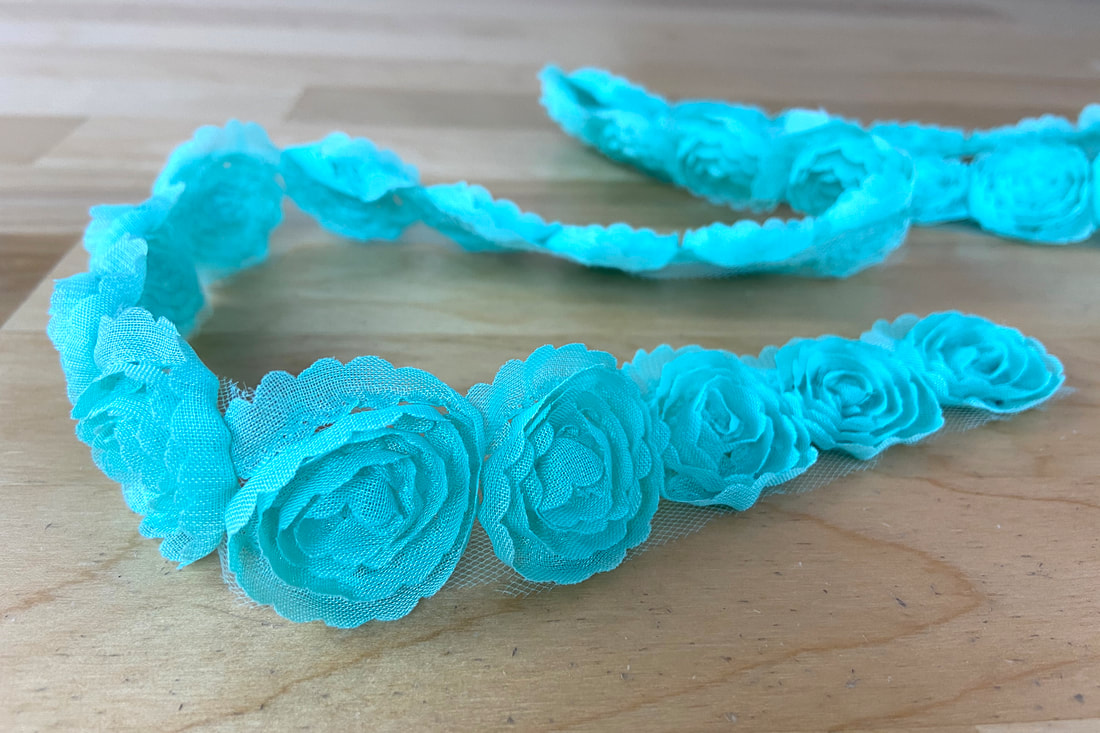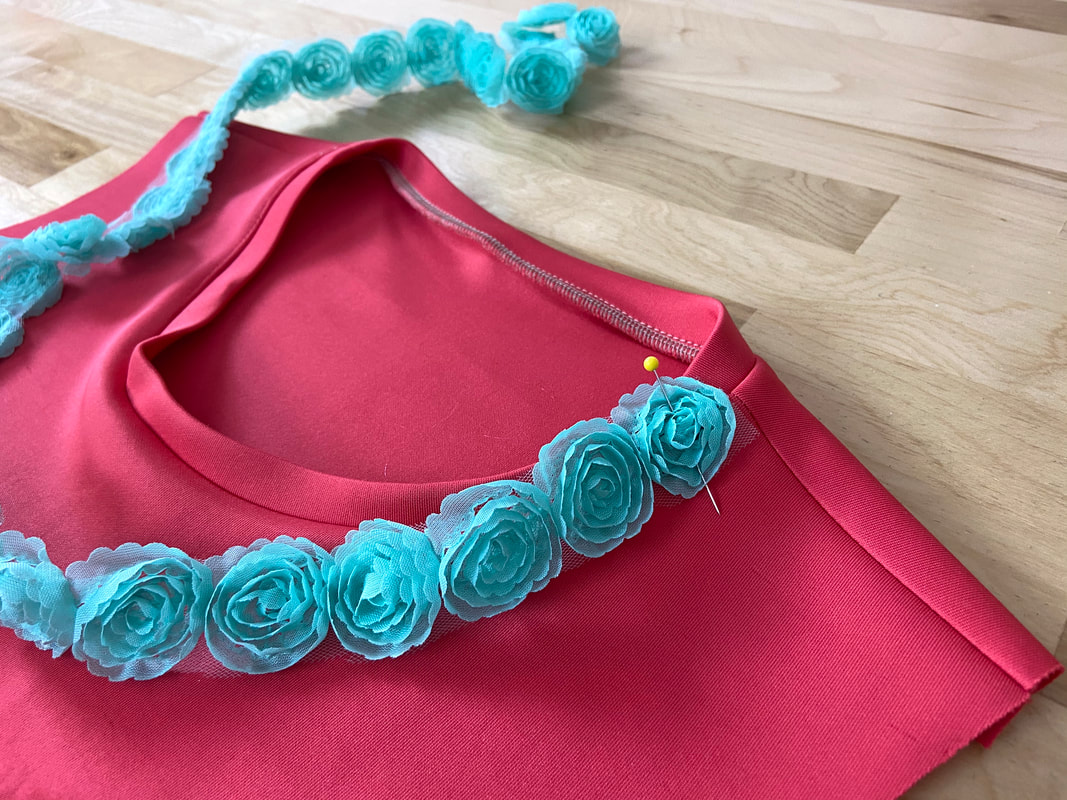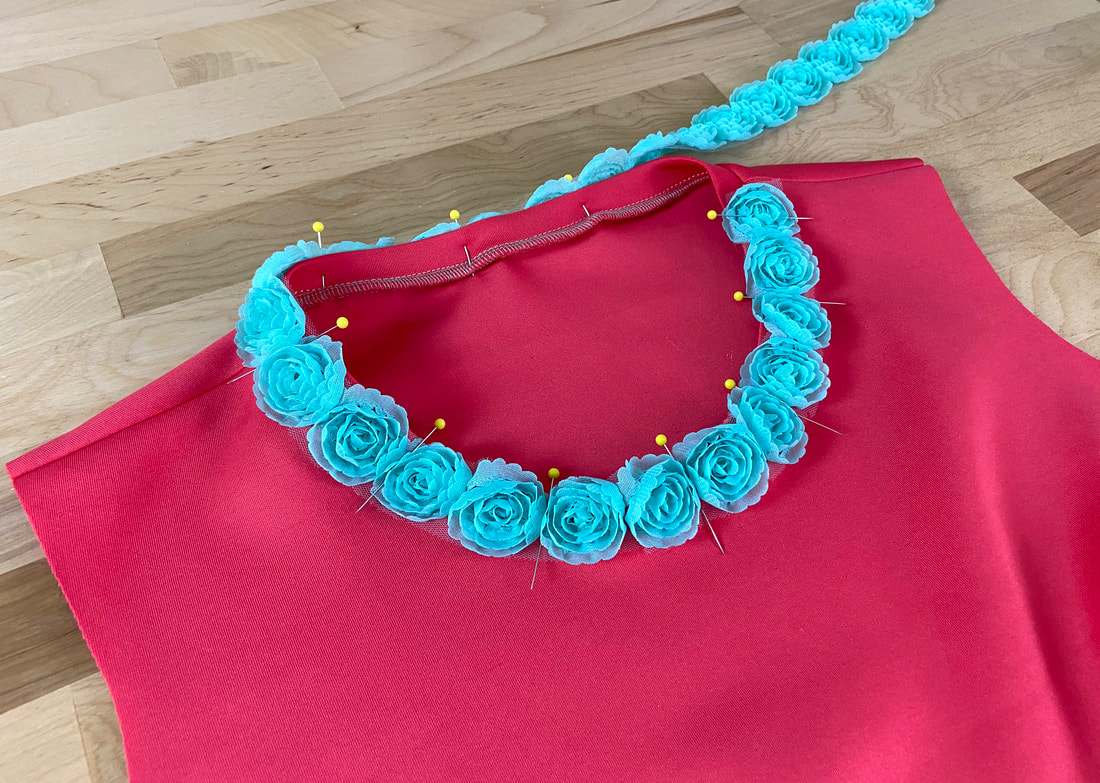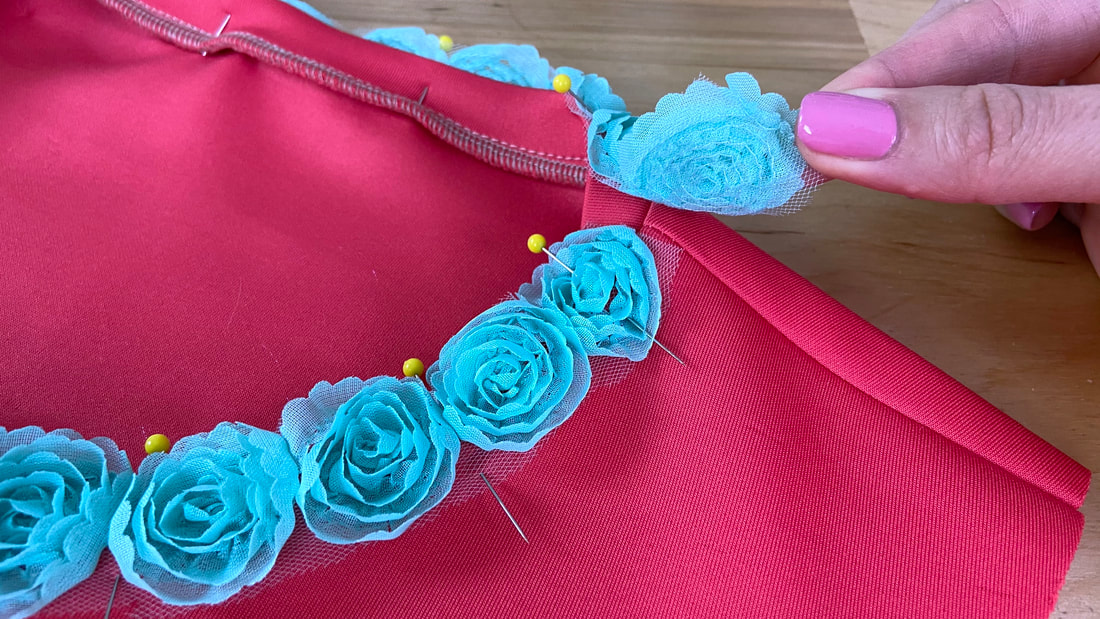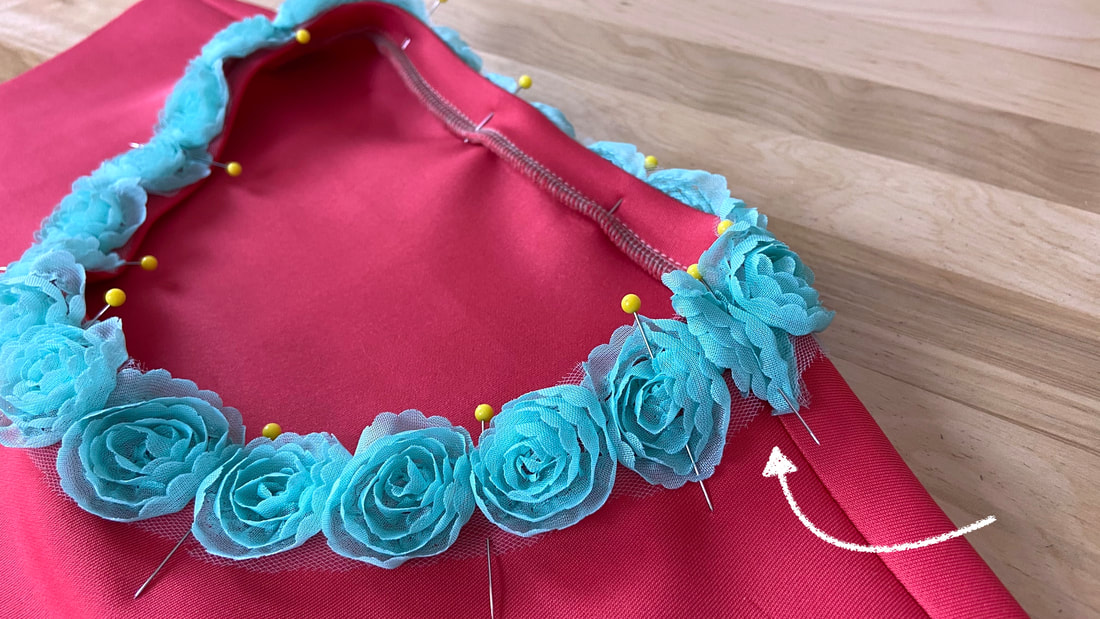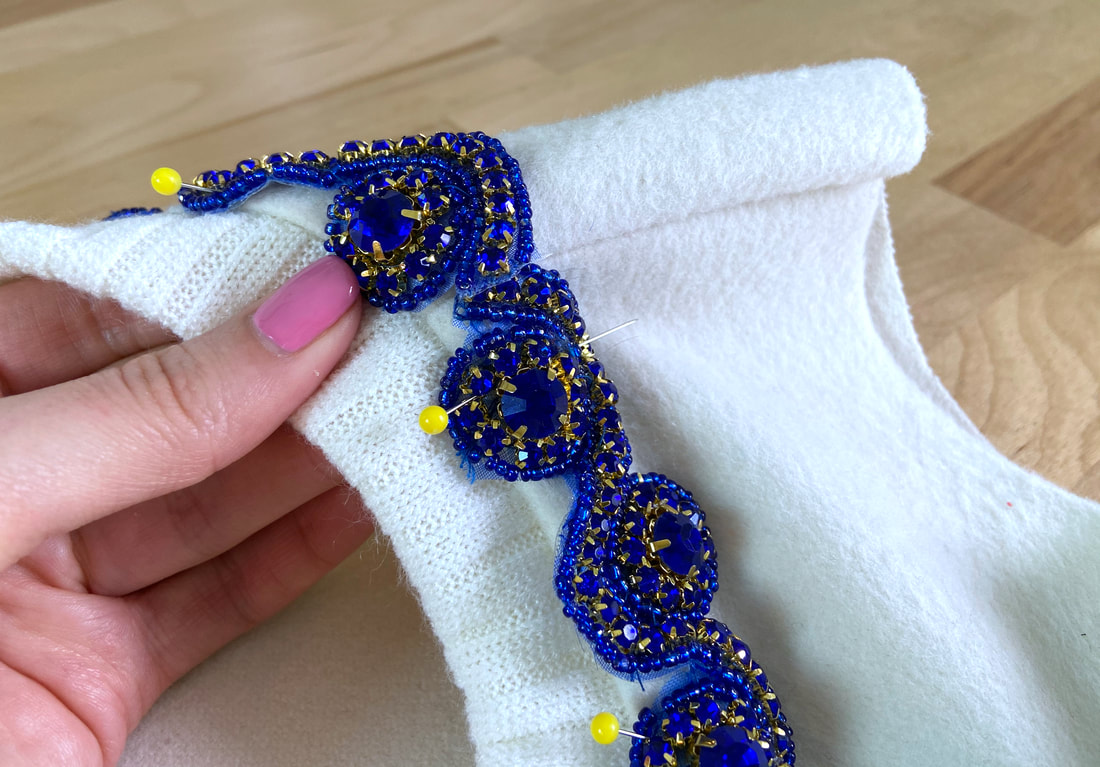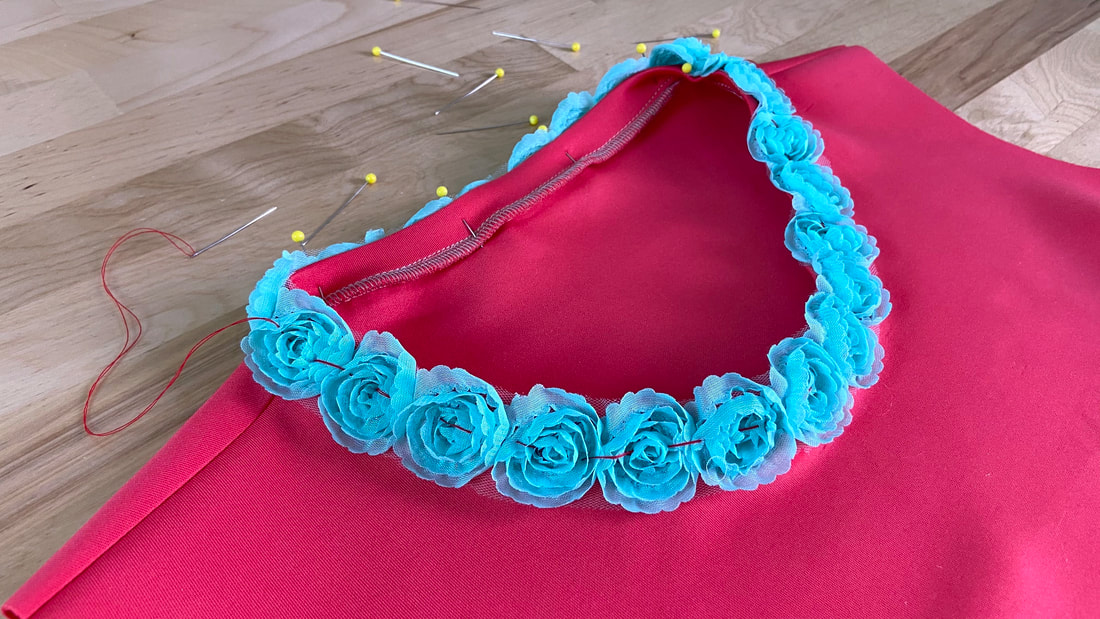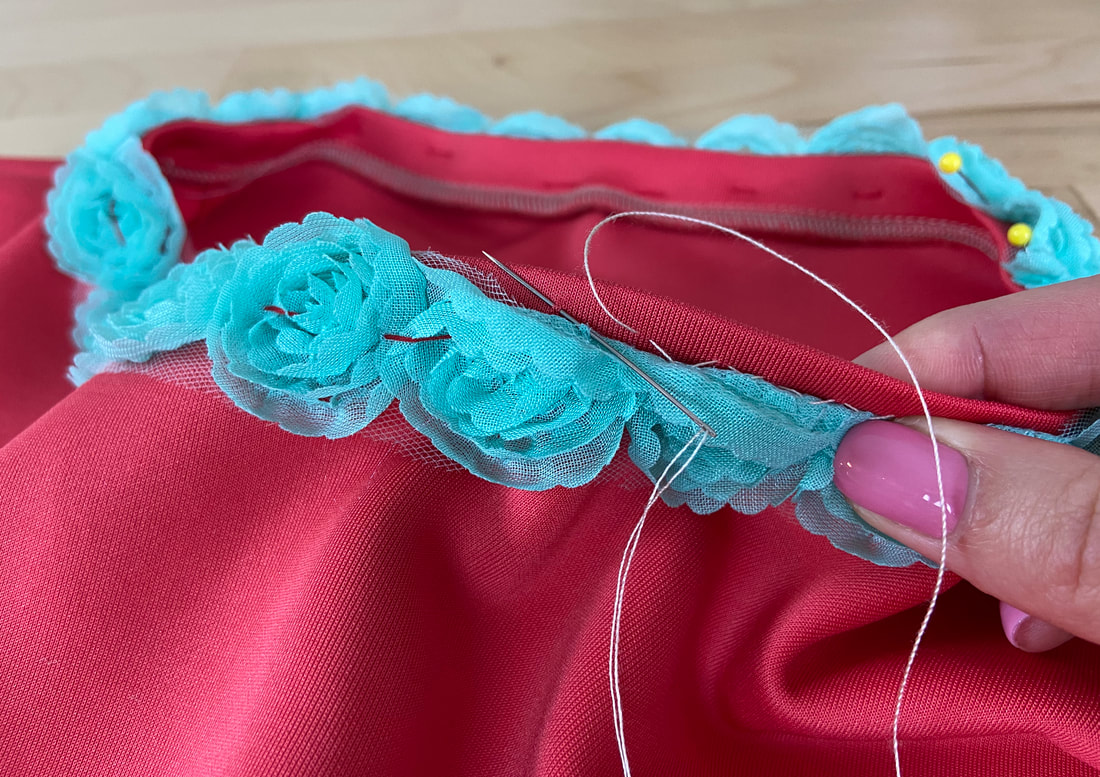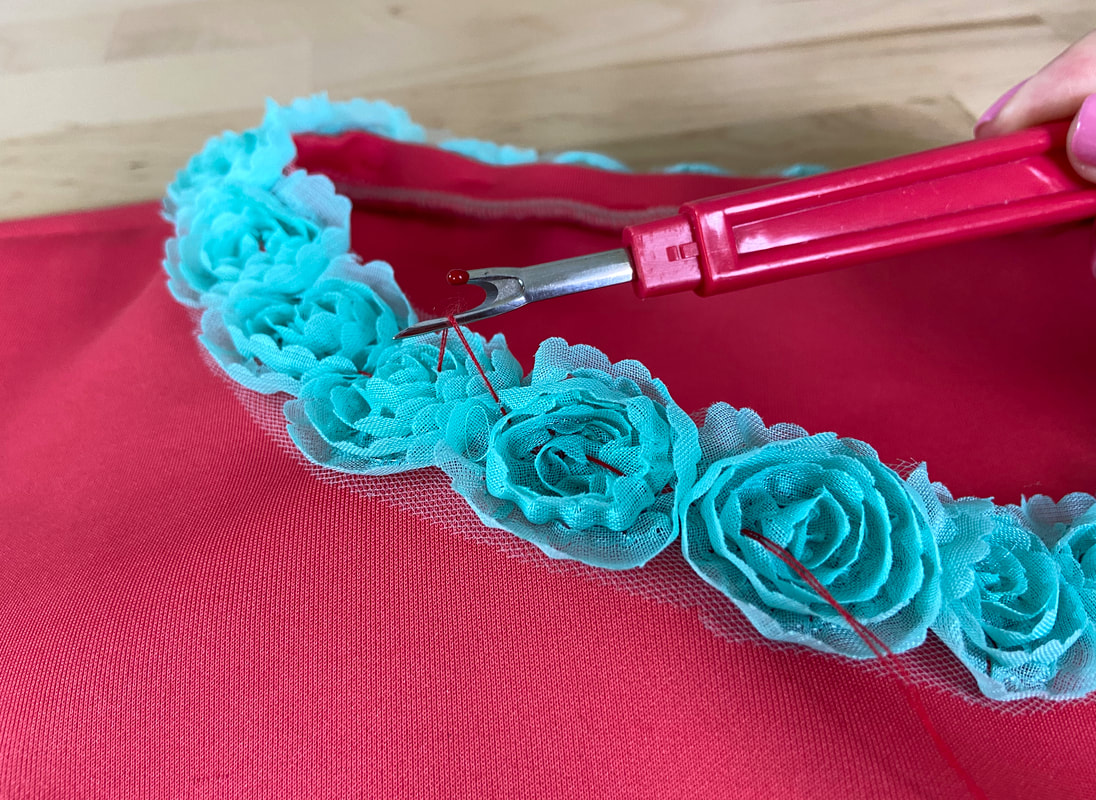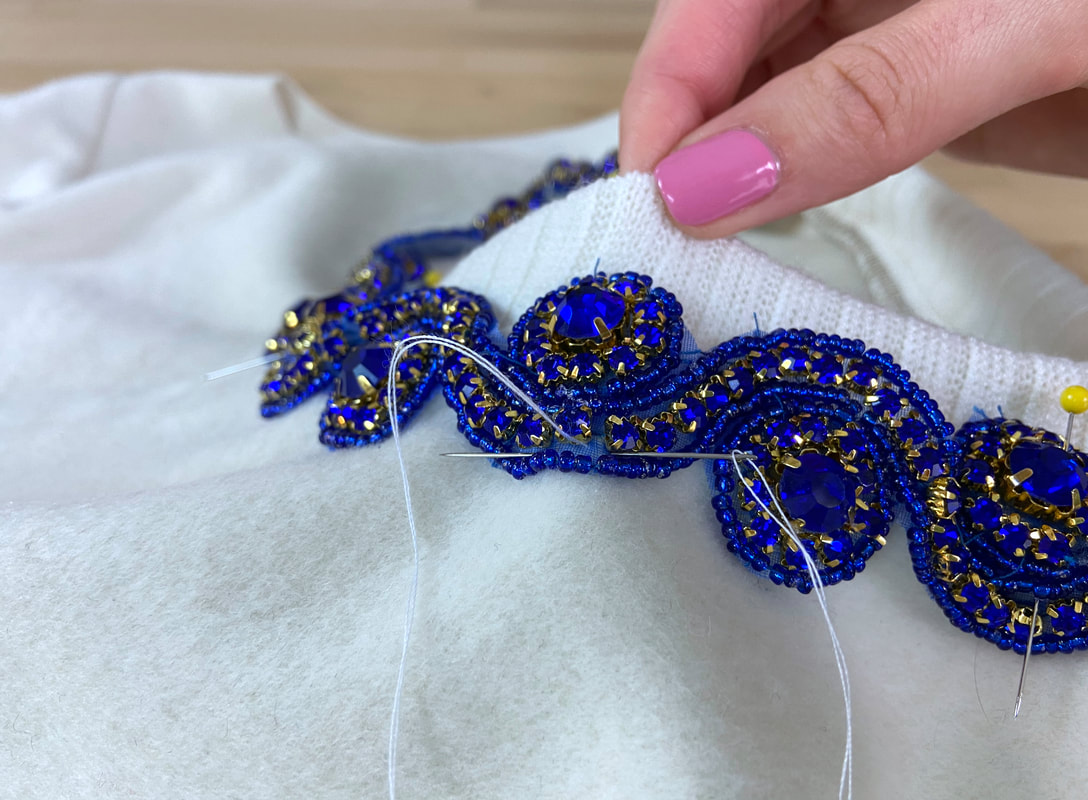A trim that is added along an already finished neckline is usually one that cannot be machine stitched. In this case, the decorative trim is attached by hand. If you take a closer look at the flower ruffle trim used in this tutorial (shown in the image above), you will notice that the trim's edges do not provide a means for it to be machine stitched, thus a hand-applied slipstitch is used to provide a professional, invisible finish.
1. Align one end of the decorative trim with the garment's shoulder seam or center back seam (if the garment has one) and position the trim along the neckline edge as desired. The wrong side of the trim should be touching the right side of the garment. Insert pins perpendicularly through the trim and neckline layer as you align the trim.
2. Continue pinning until you arrive at the trim’s starting point.
Cut the end of the trim at ½” past the trim’s starting end and fold it in at about ¼”. Overlap the two ends of the trim as shown.
Depending on the type of trim, you may be able to skip the folding process and align the two cut edges together to look like one continuous trim. This is often the case with trims that do not unravel and feature a repetitive pattern.
4. Hand baste the trim for added stability. This is extremely helpful with flimsy, difficult to control trims.
Using thread that matches the color of the trim, slipstitch through the trim's lengthwise edges and garment surface layer underneath. Be careful not to catch any garment facing or lining layers in the process. The trim should be connected only to the top surface layer of the garment.
You can learn more about slipstitching and other blind-stitching techniques in this tutorial: Hand-Applied Blind Stitches
5. Using a seam ripper, remove the hand basting stitch once the trim is fully attached.
Depending on the trim, you may need to use an even, dense hand basting stitch (running stitch) or prickstitch to connect the trim to the garment surface.
The steps for applying straight stitches including a running stitch and prickstitch, are outlined in this tutorial: Hand-Applied Straight Stitches

